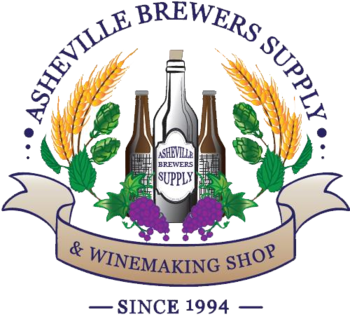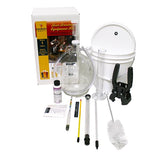Bottling
Hooray! You've successfully fermented your beer, wine, or cider, but now what? Well, as always, cleanliness and sanitation are key. Make sure that all of your equipment---siphon, bottling bucket, bottles, caps/corks---are adequately cleaned and sanitized. Also, ensure that fermentation is wholly complete (a hydrometer is your friend); this is important for avoiding over-carbonated or unintentionally sweet product.
Bottling Beer/Sparkling Cider:
In order to create carbonation in the bottle, you will have to add fresh sugar, called priming sugar, to your product. The residual yeast left in suspension will act on the fresh sugar, referment in the bottle, and the trapped CO2 will infuse into the beer/cider, creating carbonation. NOTE: We do not recommend using growlers to bottle as it is unlikely you will get a tight enough seal. Use either swing-top bottles (i.e. Grolsch or EZ-cap) or non-twist-off bottles and caps, which you will crimp on with your capper.
HOW TO DO IT: Take your priming sugar and dissolve it in about 1-2 cups of boiling water (the general rule is use 1oz/gallon). Let sugar solution cool while you prepare to siphon. Siphon the beer into your bottling bucket. After collecting about 2 gallons, gently add the sugar solution and let it mix in. You may give it a gentle stir with a sanitized spoon if you wish. Avoid splashing as much as possible, as this will oxidize the beer.
When all beer, except the sediment in fermenter, is in the bottling bucket, fill bottles and cap. Let bottles set two weeks at room temp, then refrigerate. Once cold, the beer absorbs the CO2 and becomes carbonated. Enjoy with friends!!!
NOTE: If you have let your product age for an extended period beyond the typical 2-4 weeks (i.e. you bulk aged a barley wine for 9 months), you may not have enough viable residual yeast to bottle condition. Consider adding a little fresh yeast to the bottling bucket along with the priming sugar. We've had great results with the Lallemand CBC-1.
Bottling Wine/Still Cider
Because you will be drinking this product "still," there is no need for adding priming sugars. Do ensure that fermentation is complete and that you have stabilized and/or fined (used clarifying agents) your product to your satisfaction. Assuming that you have, then the rest is very simple!
If you are corking, a soak of 30-45 minutes in a sanitizing solution is recommended; it will sanitize your corks and make corking easier with less tearing of the cork.
Siphon your product into your bottling bucket, being careful not to disturb the sediment on the bottom of your fermenter. Once you have collected all but the dregs, fill your bottles from the spigot. You may wish to attach a length of 3/8" tubing to the spigot with a 3/8" bottling wand at the end to minimize splashing and speed up the bottling process. Once bottled, cap or cork and store away in your "cellar." Enjoy with friends!


